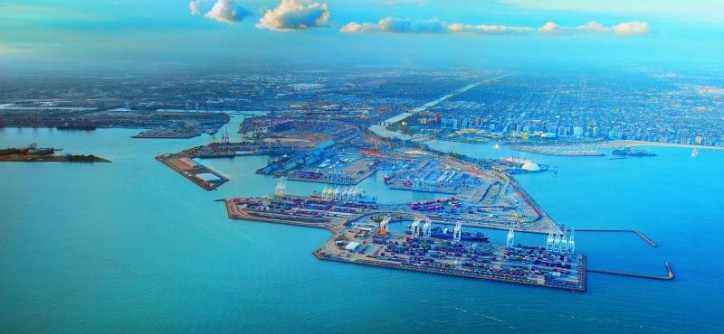A pilot project between GE Transportation (NYSE:GE) and the Port of Long Beach to enhance advance planning at the busiest port complex in North America is officially underway. Over the next two months, stakeholders across the Port will use GE’s Port Optimizer™ software to access data that will allow them to move cargo containers more efficiently.

Port Optimizer enhances cargo flow as participating terminal operators and other stakeholders receive much-improved advance notice of cargo arrival, coordinated with data on the availability of equipment, labor and other resources needed to move that cargo through the supply chain.
Three of the Port’s six container terminals are involved – Long Beach Container Terminal, Total Terminals International and International Transportation Service. The system debuted at the Port of Los Angeles last year.
“We welcome the opportunity to have this exciting technology demonstrated here in our Port,” said Port of Long Beach Executive Director Mario Cordero. “We are always searching for new means toward improving operational efficiencies in the supply chain as it moves through this port complex. We look forward to observing Port Optimizer in action.”
“We’re excited about the potential of this technology,” said Long Beach Harbor Commission President Lou Anne Bynum. “Moving goods more efficiently through this important gateway is the key to accommodating future cargo growth. The data collected during this pilot at some of our busiest terminals could help to accomplish this, and we look forward to seeing the results.”
“We are proud to launch our Port Optimizer™ software in Long Beach,” says Jen Schopfer, VP, General Manager of Transport Logistics for GE Transportation. “Not only will GE be piloting our product’s core capabilities around advanced visibility and planning, but we are also launching some Long Beach-centric functionality – marine terminal operator and landside transportation integrations for better planning and gate transactions, including MatchBack Systems for dual transactions, and advanced/predictive analytics addressing truck congestion using GeoStamp’s IOT platform.”
These capabilities serve many stakeholders across the port complex, including but not limited to marine terminal operators, ocean and motor carriers, railroads and beneficial cargo owners.
“The Harbor Trucking Association is excited that GE’s Port Optimizer is expanding its operational footprint to include the Port of Long Beach and will now serve the broader San Pedro Bay port complex,” said Weston LaBar, CEO of the Harbor Trucking Association. “The HTA is committed to the rapid adoption of technology and digitization of the supply chain. As we become a proactive, rather than reactive, industry, the Port Optimizer is the key tool that will enable the necessary data visibility and multi-stakeholder systems integrations for these efforts to be successful. This project has the potential to be the single most impactful enhancement to our industry since the adoption of containerization.”
Source: GE Transportation